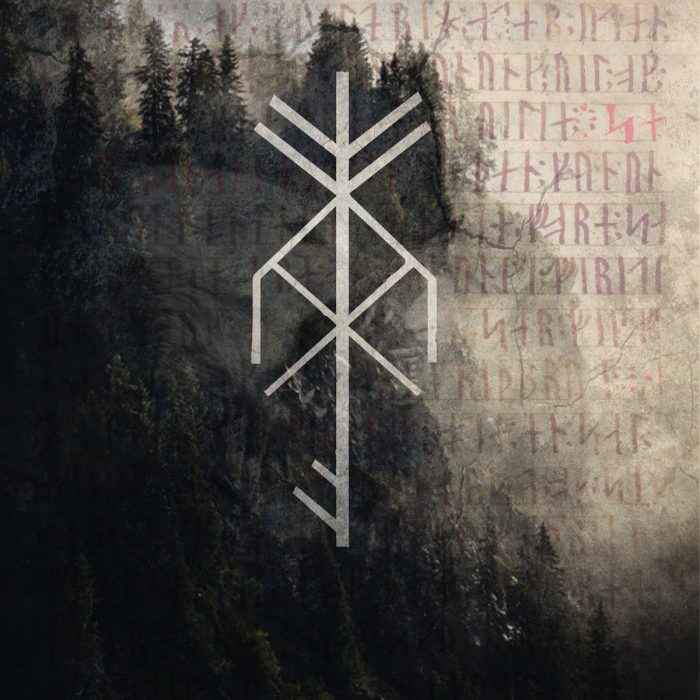
Osi and the Jupiter play a mostly acoustic ambient with synthetic overtones that borrows heavily from ancestral Nordic cultural remnants for its conceptual, and musical, orientation. In Uthuling Hyl, this takes the form of what we could call a European Pagan Drone music, with all that each of these words could imply by themselves and together. As European, it seeks that connection in instrumentation and tone to pre-traditionalist roots. As a Pagan affair, it is based on a numinous connection to surroundings, contemplative and wordless reflection, and an unfolding wyrd presencing a quality that has come to be known as ‘honor’. As all ambient, the music depends entirely upon its ability to very explicitly maintain a continuous flow of sounds that are not allowed the minimal digression. Thereby is a more esoteric teaching concealed in the construction and balance of the music itself, which is as all art should be. For in trying to bring to bear a connection human beings can have to nature when they place themselves within it with respect and devotion, the music also reflects how delicate this affair is, and how quickly it can all be burnt down by our hubris. In truth, it would take a mundane simpletone —or an utter imbecile— to relegate the experience presented in Uthuling Hyl to a debased utilitarian function such as serving as soundtrack to some ill-advised television show.
The hidden drone component here dictates that the variation of the elements must be done ever so slightly, taking care that texture and tone are gauged with due attention to craft. Texture is sustained while introducing and remaining particulars, relying on relatively abrupt changes in pacing or timbre only in very specifc cases and with a very specifc aim in mind. In general, and above all, the delicate fullness in unity that marks this work serves as a mantle for a whole cosmos in which organisms live a precarious existence but whose essence eternally flows. The patterns of said fabric are sewn by the threads of individual musical voices, surviving as they do mindlessly, but doing so only because their actions fit the pacing and balance of the whole. The endings of those existences are timely and waste not energy nor leave space unmarked. Sounds of worship and numinous contemplation permeate this summoned spiritual world. The cello parts by Kakophonix do not overimpose nor indulge, but enhance ekstasis, bringing an energetic waves that travel the landscape across darkened wood, mountain and sky. In the midst of this interpretation, the mournful, pleading vocalizations stand out as the human presence submerged, wailing, unnoticed in a sinisterly-numinous ocean of flowing forces in colossal dimensions perhaps quantified by some physicist, but ultimately undreamable by our daytime minds.
While all manifestation is One, we can highlight aspects or levels of it as they come to the fore of our impressions. In the case of Uthuling Hyl, this would be more unconscious vaporous tension, the watery flow of emotions that lie below reason and will. The humid web that holds things together here is ever so vulnerable, our transgressions the probable cause of dissolutions that are no crimes but mere effects to causes. The listener, the conscious human, intrudes upon this space, and a decision must be taken to coalesce or see it all dry up, and waste into cold —or perhaps burn up into merciless hatred and ambition. Such is the picture that Osi and the Jupiter reveal in pattern and spirit. As numinous worship, the present work calls for our knowing our place, and seeking our destiny; for our seeking a voice and power, for our evolutive ascendance, in a picture of our cosmos that finds beauty in bleakness.
Tags: 2017, Kakophonix, Osi and the Jupiter, Uthuling Hyl


“borrows heavily from ancestral Nordic cultural remnants for its conceptual, and musical, orientation”
This doesn’t borrow anything from Nordic culture aside from a few ruins on the cover. Ancient Nordic music probably sounded nothing like this. This is entirely postmodern as opposed to traditionalist.
‘As European, it seeks that connection in instrumentation and tone to pre-traditionalist roots”
Can you explain what you mean here?
“As a Pagan affair, it is based on a numinous connection to surroundings, contemplative and wordless reflection”
What evidence to we have that actual (ancient) pagans had such an emo connection to their surroundings that was contemplative and based on wordless reflection? I’m picturing the lead actor from Vikings sitting on a hill gazing over a Fjord with postmodern ‘nordic’ music playing over the soundtrack.
A little less angst and alittle more honest searching would do you well.
Spoken like a true postmodern ‘pagan’.
I am seeking honesty. Read my comment again you ignoramus.
Nietzsche just shot syphilis all over this gay ass shemale music! Rape the trannies! No shemale shall be spared!